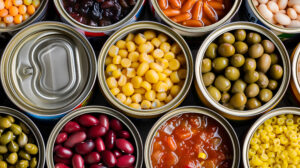I love to grill, but am never sure how to tell when the meat is done! Any tips?
The short answer: It’s a common problem, but we have answers …
The explanation: Ensuring that meat prepared on a grill is cooked to a safe temperature is a skill that is built through practice. But understanding some key points and principles can help you become a grill master faster:
- A key step for consistent mastery is to ensure your meat is completely thawed so it cooks evenly. That said, thaw it in the refrigerator (not on the counter!).
- While some cooks recommend that meat should be brought to room temperature prior to grilling, this should be carefully monitored to ensure meat is not left out for more than an hour or two.
- If marinating, keep food safety in mind – keeping the marinating meat in the refrigerator until ready to cook; reserving a portion before adding the raw meat or boiling the marinade if intending to use as a sauce on the cooking or cooked meat.
- If grilling vegetables along with the meat, keep them separate – cutting the vegetables first, using separate knives and cutting boards, or washing these between the uses.
- Use a meat thermometer to test for doneness, following the USDA guidelines for safe temperatures:
| SAFE MINIMUM INTERNAL TEMPERATURES | |
| Whole Poultry | 165 °F |
| Poultry Breasts | 165 °F |
| Ground Poultry | 165 °F |
| Beef Hamburgers | 160 °F |
| Pork | 160 °F |
| Steaks, roasts, and chops of beef, pork, veal, or lamb | Medium: 160°F Medium Rare: 145°F, rest for 3 minutes |
- Once cooked, place the food on a clean plate or tray that didn’t hold the raw meat.
- If grilling more than will be eaten soon, keep it warm on a raised rack or side of the grill where burner is off.
TAG can simplify your food safety and quality practices. Contact us for information!





